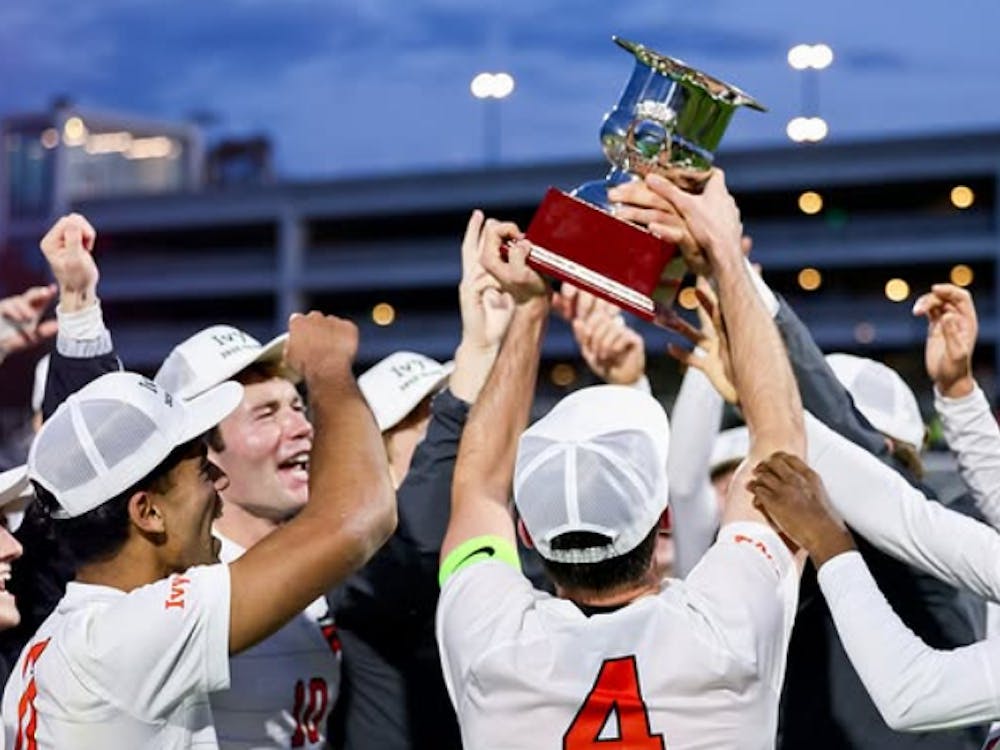The Princeton offense sputtered in the first half of last week's win over Brown (1-4 overall, 0-2 Ivy League). What really got Princeton (1-4, 1-1) going in the second half was getting the ball to its star wide receiver, junior B.J. Szymanski.
Szymanski only caught one ball in the first half, and he was not the deep threat that the Tigers needed to get the ball into the endzone.
Several passes were thrown his way early on, but junior quarterback Matt Verbit threw several balls into Brown's defensive line and his own offensive line due to a low trajectory. In fact, Verbit was second on the team with two receptions in the game, both of which came after he hit his own offensive linemen in the helmet. Another pass that hit a lineman in the head was ruled a backward pass on Princeton's first drive, which is a fumble, leading to an early Brown touchdown.
"[Throwing to Szymanski] was a conscious decision the whole game," head coach Roger Hughes said. "The trouble was, we were getting our passes knocked down."
Tipped balls
Part of this was attributable to Brown's respect for the speed of Princeton's wide receivers. The Bears spent much of the game in three-deep coverage, leaving substantial cushions between the cornerbacks and wide receivers. To take advantage of that, Princeton ran pass plays that could get the ball to its receivers on short routes, exploiting all the space in front of playmakers like Szymanski, junior wide receiver Clinton Wu and senior wide receiver Blair Morrison. Shorter passes usually have lower arcs, making them more likely to be tipped at the line of scrimmage.
Another cause of the tipped balls was the refrain that seems to keep coming back to this team, lack of execution.
"We were having a breakdown in our protection," Hughes said. "We weren't getting [defensive] guys cut to the side we were throwing the football. We made that adjustment at halftime, and obviously we started getting guys down and getting slants open."
It also helped that in the second half the pass selection was not so predictably short. In the Tigers' second drive after halftime (its eighth of the game), Verbit finally aired out the ball, throwing deep down the field to Szymanski on a post pattern. The pass was too far to the center of the field and fell incomplete, but it opened up the rest of the offense by forcing the Bears to respect and defend the home run ball.
"They played a lot of deep, deep-three coverage with their cornerbacks, 10-12 [yards] and a lot of ball coverage," Szymanski said. "Our whole plan was just to beat them with what they gave us. They gave us a lot of underneath stuff, so that's what we took."
Because the defensive backs had to be more prepared for deep passes, Brown's linebackers were more conscious of their pass coverage responsibilities in the flats and curl zones, opening up the middle for junior running back Branden Benson, who ran for 84 yards in the fourth quarter after tallying only 44 in the first three. Benson also added two touchdown runs in the last quarter.
Off-balance
Szymanski went on to catch three passes on the drive where Verbit finally took a shot deep. With the Brown defense finally off-balance later in the game, Verbit was able to complete a quick skinny post pass to Wu, who took it 99 yards to the promise land, completing the longest play in Ivy League history. The play also gave the Tigers the lead.
Even though the defense lost the lead on Brown's next possession, the Bears' defense was in no position to keep Princeton from scoring again.

The Tigers took the lead for good two possessions later, when all the setup from the earlier stages of the game came to fruition. Princeton moved the ball with productive runs by Benson and two consecutive first down completions to Szymanski, on slant and out routes — in both cases, Szymanski caught the ball standing still.
"I think any time you can get 10, 15 yards a pop on even simple little out routes, it's always going to get you going," Szymanski said.
The offense had set itself up so that the deep threat kept Brown's secondary off guard, leaving Szymanski open on stopping routes. But it simultaneously left holes for Benson to exploit.
"It gives the offensive line a lot of positive reinforcement for doing what they should do, which they were," Szymanski said. "It opens up the running game. It opens up the deep passing game. It opened up everything."
The Tigers will attempt to open up the airways again this weekend when they travel to Cambridge, Mass., to take on Harvard. Princeton will have to take advantage of its wide receiver speed, as it did against Brown, in order to take down the undefeated Crimson.







